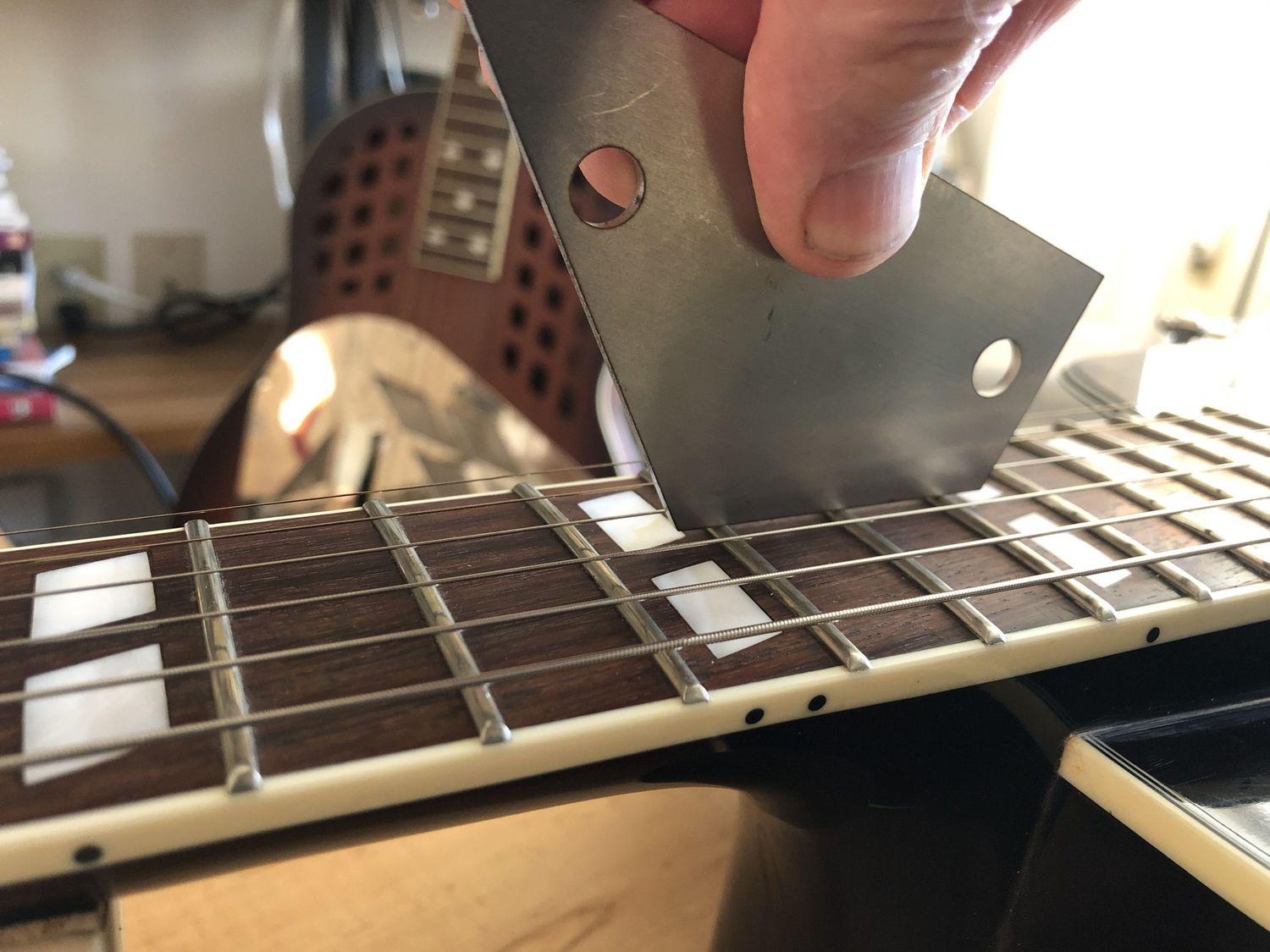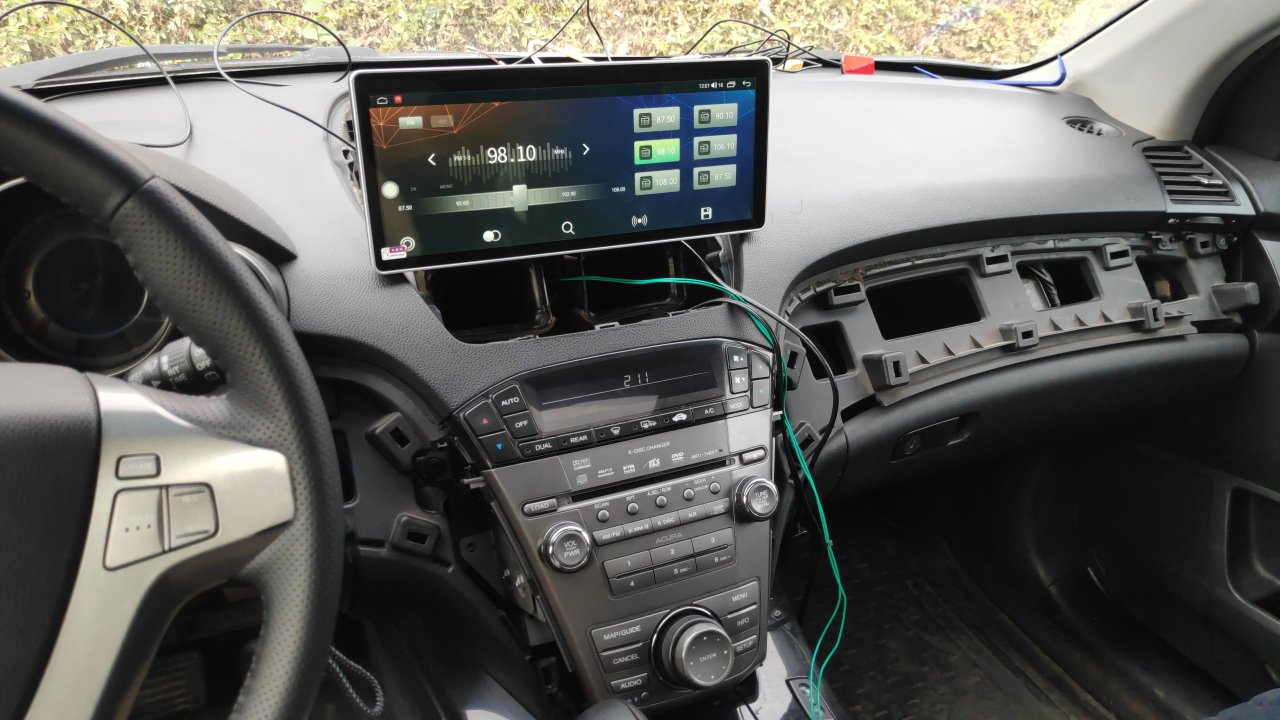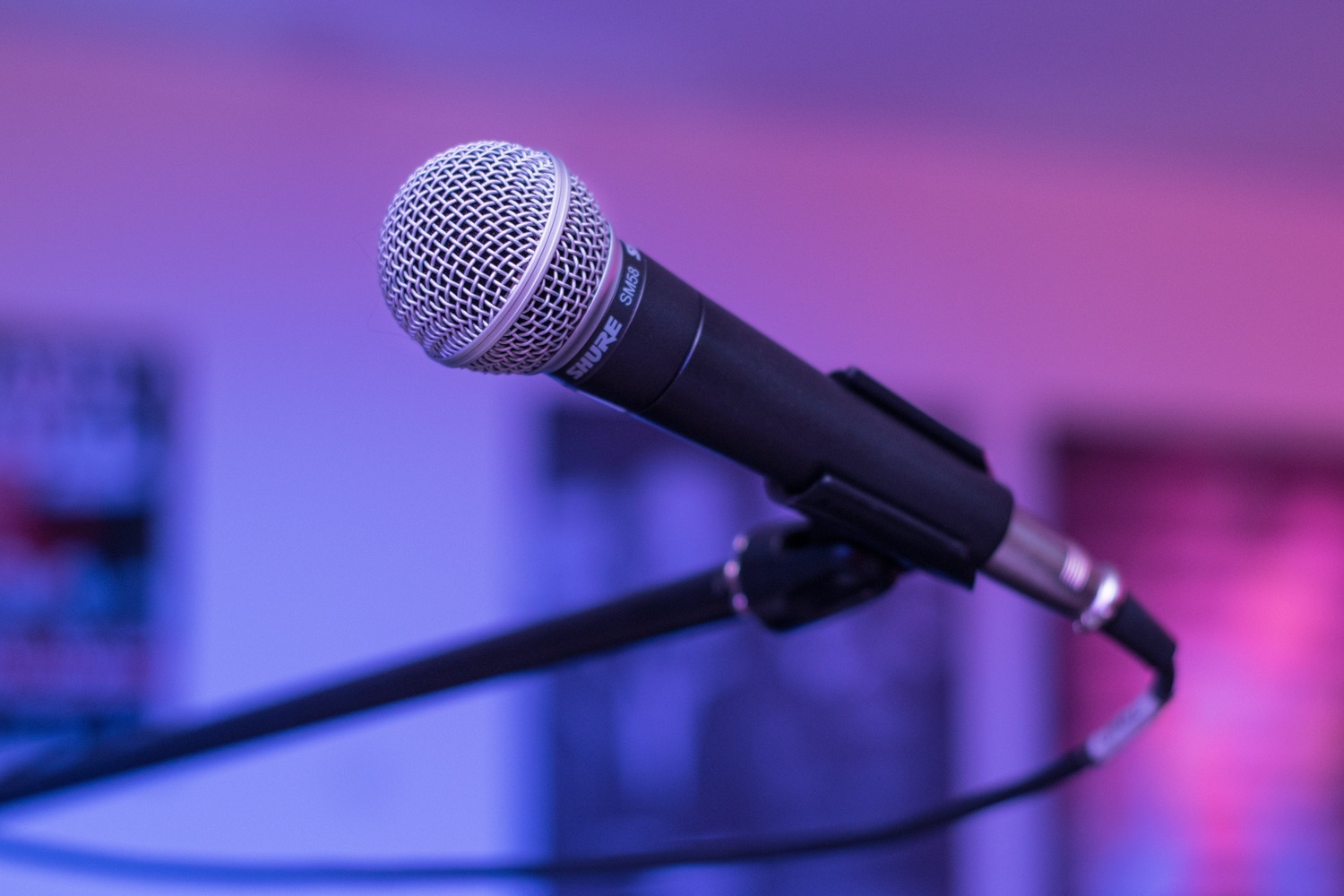Home>Devices & Equipment>Microphone>How To Get Rid Of Microphone Buzz


Microphone
How To Get Rid Of Microphone Buzz
Published: February 17, 2024
Learn effective ways to eliminate microphone buzz and improve audio quality. Discover tips and techniques to get rid of unwanted noise interference.
(Many of the links in this article redirect to a specific reviewed product. Your purchase of these products through affiliate links helps to generate commission for AudioLover.com, at no extra cost. Learn more)
Table of Contents
Introduction
Introduction
Microphones are essential tools for capturing clear and high-quality audio, whether for professional recordings, live performances, or online communication. However, one common issue that can detract from the audio quality is microphone buzz. This annoying buzzing or humming sound can be caused by various factors, including electrical interference, grounding issues, or improper cable management. Fortunately, there are several effective strategies to eliminate microphone buzz and ensure a pristine audio recording or performance.
In this comprehensive guide, we will explore the various causes of microphone buzz and provide practical solutions to address this issue. By understanding the root causes and implementing the recommended techniques, you can significantly improve the audio quality and eliminate the frustrating buzz from your microphone recordings. Whether you are a professional audio engineer, a content creator, or a musician, mastering the art of eliminating microphone buzz is crucial for achieving pristine sound reproduction.
Let’s delve into the intricacies of identifying and resolving microphone buzz, empowering you to optimize your audio setup and deliver impeccable sound quality in any recording or performance scenario.
Identifying the Cause of Microphone Buzz
Before addressing microphone buzz, it is imperative to pinpoint the underlying causes to implement targeted solutions effectively. Microphone buzz can stem from various sources, and a systematic approach to identifying the specific factors contributing to the issue is crucial. Here are some common culprits behind microphone buzz:
- Electrical Interference: One of the primary causes of microphone buzz is electrical interference from nearby electronic devices or power sources. This interference can manifest as a low-frequency hum or buzzing sound in the audio signal, compromising the overall quality of the recording or performance.
- Grounding Issues: Improper grounding in audio equipment or venues can lead to unwanted noise, including microphone buzz. Ground loops, a common consequence of inadequate grounding, can introduce hum and buzz into the audio signal, detracting from the clarity and fidelity of the sound.
- Improper Cable Management: Inadequate cable management, such as using damaged or low-quality cables, can contribute to microphone buzz. Additionally, running audio cables parallel to power cables or other sources of electromagnetic interference can exacerbate the issue.
- Environmental Factors: External factors, such as radio frequency interference (RFI) and electromagnetic interference (EMI) from nearby electronic devices or wireless equipment, can introduce unwanted buzz into the microphone signal, particularly in sensitive recording environments.
By carefully assessing the audio setup and considering these potential sources of microphone buzz, you can narrow down the root cause and proceed with targeted solutions to mitigate or eliminate the issue. In the following sections, we will delve into effective strategies to address each of these contributing factors, empowering you to achieve pristine audio quality devoid of disruptive buzz.
Grounding and Shielding
Grounding and shielding play pivotal roles in mitigating microphone buzz and ensuring optimal audio signal integrity. Proper grounding is essential for minimizing electrical noise and interference, while shielding helps protect the audio signal from external electromagnetic disturbances. Here’s how you can address grounding and shielding to combat microphone buzz:
- Ground Loop Isolation: Addressing ground loops, which often contribute to microphone buzz, is a critical step in achieving clean audio signals. Utilizing ground loop isolators or balanced audio connections can effectively break the loop and eliminate the associated hum and buzz.
- Grounding Audio Equipment: Ensuring that all audio equipment, including mixers, amplifiers, and recording interfaces, are properly grounded can significantly reduce the risk of introducing unwanted noise into the audio signal. Properly grounded equipment provides a stable reference point for the electrical system, minimizing the potential for buzz-inducing interference.
- Shielded Cables: Utilizing shielded audio cables can help protect the audio signal from electromagnetic interference, reducing the likelihood of microphone buzz. Shielded cables feature a conductive layer that acts as a barrier against external interference, preserving the integrity of the audio transmission.
- Isolating Audio Components: Positioning audio equipment away from potential sources of electromagnetic interference, such as power cables, transformers, and electronic devices, can aid in shielding the audio signal from external disturbances, thereby reducing the risk of microphone buzz.
By implementing these grounding and shielding measures, you can create an environment conducive to pristine audio transmission, effectively minimizing the impact of electrical noise and interference on your microphone recordings or live performances. These proactive steps contribute to a more reliable and consistent audio setup, free from the disruptive effects of microphone buzz.
Proper Cable Management
Effective cable management is instrumental in preventing and mitigating microphone buzz, ensuring that the audio signal remains free from unwanted interference and noise. By adopting best practices for cable organization and maintenance, you can significantly reduce the risk of buzz-inducing factors. Consider the following strategies for optimal cable management:
- High-Quality Cables: Investing in high-quality, well-insulated audio cables can minimize the risk of interference and signal degradation, thereby reducing the likelihood of microphone buzz. Quality cables with proper shielding offer enhanced protection against external electromagnetic disturbances.
- Separation of Audio and Power Cables: Avoid running audio cables parallel to power cables, as this configuration can lead to electromagnetic interference and induce buzz in the audio signal. Maintaining a physical separation between audio and power cables helps prevent unwanted coupling and the associated noise issues.
- Cable Routing and Organization: Employing thoughtful cable routing and organization techniques, such as using cable trays, ties, and clips, promotes a tidy and systematic arrangement of audio cables. This approach minimizes the risk of cable damage, signal crosstalk, and interference, contributing to a cleaner audio transmission.
- Regular Cable Inspection: Periodically inspecting audio cables for signs of wear, damage, or compromised shielding is essential for identifying and addressing potential sources of interference. Promptly replacing damaged cables mitigates the risk of introducing buzz into the audio signal.
By adhering to these cable management best practices, you can create an environment conducive to optimal audio signal transmission, reducing the vulnerability of your setup to disruptive factors that contribute to microphone buzz. Thoughtful cable management not only enhances the reliability of your audio system but also contributes to the overall quality and consistency of your sound reproduction.
Using a Power Conditioner
Integrating a power conditioner into your audio setup can be a game-changer in combating microphone buzz and ensuring a clean, reliable power supply for your equipment. Power conditioners offer comprehensive protection and filtering capabilities, addressing various power-related issues that can contribute to audio interference and buzz. Here’s how utilizing a power conditioner can benefit your audio system:
- Voltage Regulation: Power conditioners are equipped with voltage regulation capabilities, stabilizing the incoming electrical supply and safeguarding your audio equipment from voltage fluctuations. This consistent power delivery minimizes the risk of audio signal distortion and interference, reducing the potential for microphone buzz.
- Surge and Spike Protection: Power conditioners feature built-in surge and spike protection, shielding your audio gear from sudden voltage surges and transient spikes that can compromise the integrity of the audio signal. By mitigating these power anomalies, power conditioners help maintain a clean and stable power environment conducive to high-quality audio transmission.
- EMI and RFI Filtering: Effective power conditioners incorporate electromagnetic interference (EMI) and radio frequency interference (RFI) filtering mechanisms, attenuating external electrical disturbances that can induce buzz and noise in the audio signal. This filtering capability enhances the overall immunity of your audio setup to external interference sources.
- Ground Loop Mitigation: Some advanced power conditioners offer features specifically designed to address ground loop issues, effectively breaking the loop and eliminating the associated hum and buzz from the audio signal. This targeted approach to ground loop mitigation contributes to a cleaner and more reliable audio environment.
By integrating a power conditioner into your audio system, you can fortify your setup against a myriad of power-related challenges that often lead to microphone buzz and audio interference. The comprehensive protection and filtering capabilities of power conditioners contribute to a more resilient and consistent audio infrastructure, ensuring that your microphone recordings and live performances remain free from disruptive noise issues.
Eliminating Interference Sources
To achieve pristine audio quality and eradicate microphone buzz, it is crucial to identify and eliminate potential sources of interference that can compromise the integrity of the audio signal. By addressing these interference sources, you can create an environment conducive to clear and uninterrupted audio transmission. Here are effective strategies for eliminating interference sources:
- Radio Frequency Interference (RFI) Mitigation: Identifying and mitigating sources of RFI, such as wireless devices, cell phones, and electronic gadgets, is essential for minimizing the risk of interference in your audio setup. Utilizing RFI filters and positioning sensitive audio equipment away from RFI-emitting devices can significantly reduce the likelihood of RFI-induced microphone buzz.
- Electromagnetic Interference (EMI) Prevention: Shielding audio components from EMI sources, such as power cables, transformers, and lighting fixtures, is crucial for preventing EMI-induced interference. Employing EMI shielding materials and maintaining adequate physical separation between audio gear and EMI-emitting sources can help preserve the integrity of the audio signal.
- Wireless Device Coordination: When utilizing wireless microphones or other wireless audio devices, coordinating frequencies and ensuring compatibility with other wireless equipment in the vicinity is essential for minimizing potential interference issues. Proactively managing wireless device configurations mitigates the risk of signal conflicts and interference-induced buzz.
- Environmental Noise Reduction: Creating a controlled acoustic environment by minimizing ambient noise and reverberation can contribute to a cleaner audio signal, reducing the prominence of microphone buzz. Implementing acoustic treatments and soundproofing measures in recording spaces and performance venues helps mitigate environmental noise-related interference.
By systematically addressing these interference sources, you can fortify your audio setup against disruptive factors that commonly lead to microphone buzz and interference. Proactive interference mitigation measures contribute to a more reliable and consistent audio environment, allowing you to capture and reproduce high-quality sound with minimal risk of disruptive noise issues.
Conclusion
Eliminating microphone buzz is a critical endeavor for audio professionals, content creators, and performers seeking to deliver pristine sound quality in their recordings and live presentations. By understanding the various factors contributing to microphone buzz and implementing targeted solutions, you can achieve a clean and reliable audio environment free from disruptive interference. Grounding and shielding measures play a pivotal role in minimizing electrical noise and interference, while proper cable management and the integration of power conditioners contribute to a resilient and interference-resistant audio setup.
Furthermore, the proactive elimination of interference sources, including RFI, EMI, and environmental noise, bolsters the integrity of the audio signal, mitigating the risk of microphone buzz and ensuring consistent, high-fidelity sound reproduction. By addressing these key considerations and implementing the recommended strategies, audio professionals and enthusiasts can elevate the quality of their recordings, performances, and audio productions, fostering an immersive and captivating auditory experience for their audience.
Ultimately, the pursuit of pristine audio quality involves a multifaceted approach encompassing technical expertise, strategic equipment deployment, and environmental considerations. By embracing these principles and actively combating the factors contributing to microphone buzz, you can create a sonic landscape characterized by clarity, precision, and uncompromised fidelity, setting the stage for impactful and memorable audio experiences.











